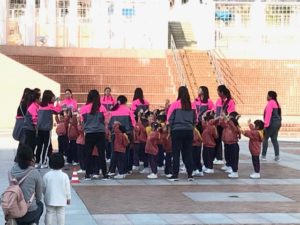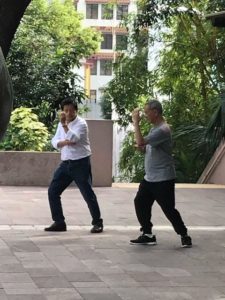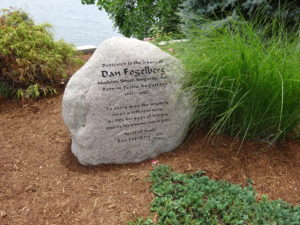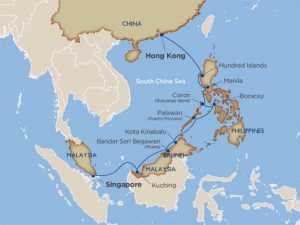 The annual Lincoln Forum in Gettysburg is in the books and we have a new General, get to keep the Chief, and took a few steps into the future. Oh, and we had some great speakers, a ton of Lincoln humor, and even a few spirits (the dead kind).
The annual Lincoln Forum in Gettysburg is in the books and we have a new General, get to keep the Chief, and took a few steps into the future. Oh, and we had some great speakers, a ton of Lincoln humor, and even a few spirits (the dead kind).
This was the 23rd annual Lincoln Forum and the last in with “The Chief” in command. The Chief is Frank Williams, whose moniker stems from his time as Chief Justice of the Rhode Island Supreme Court. Frank, along with Harold Holzer, founded the Lincoln Forum about 24 years ago and have served as Chair and Vice Chair since its inception. That is, until now. Frank has stepped down as Chair while Harold has stepped into the General role. A new Vice Chair was voted in – Jonathan W. White, current President of the Abraham Lincoln Institute, prolific author, and Professor at Christopher Newport University in Virginia. We will all miss Frank (though he will remain active under his new Emeritus status), but we’re in superb hands under Harold’s continuing leadership and Jonathon’s new enthusiasm.
The weather toyed with the meeting agenda a bit, delaying some and cancelling others (alas, one speaker was in a car crash on his way east; he’s fine but his car isn’t so well). Luckily we have a great cast of Lincoln scholars able to step into the gap. One lesson learned – always have a presentation on a thumb drive ready to go in a pinch.
This year’s Forum included some celebrities of sorts. Not just the inimitable George Buss as President Abraham Lincoln (who most attendees agreed should run again, and soon), but stars of the Lincoln world. Edward Ayers led our opening night with his “Gettysburg and the Web of War.” George Saunders – yes, that George Saunders – not only talked about his best selling book, Lincoln in the Bardo, he led a performance of it with the help of five Forum volunteers. “The Bardo,” as we affectionately call it, is one of the more unique takes on the Lincoln story, both because it is fiction and because it brings in the voices of those lingering in the intermediate spaces between life and rebirth.
Not to be outdone, David W. Blight brought home the final keynote speech on the last night with his discussion of Lincoln and Frederick Douglass. Many of us know the highlights of Douglass’s life, from slave in Baltimore to free abolitionist to one of the greatest leaders of the African-American – and all American – community. Normally I focus on Lincoln himself, but Blight has inspired me to dig deeper into the life of Douglass as well. He was also nice enough to sign me copy of his book (plus quite a few copies for the other attendees as well).
We had many other speakers of course. From Andrew Delbanco (one of the highlights for sure) to Kate Masur (likewise) to Joseph Fornieri (doing a wonderful job as pinch hitter) to a panel on “Women in the Civil War” featuring Catherine Clinton, Candice Shy Hooper, and Edna Greene Medford. And we can’t forget the team of Abbott and Costello John Marszalek and Craig Symonds discussing the Ulysses S. Grant memoirs.
As the Forum officially ended, many attendees stayed to attend the annual Remembrance Day activities at the nearby Gettysburg Battlefield. George Buss as Abraham Lincoln read the Gettysburg Address and the crowd embraced the overwhelming mixed feelings of sorrow and rebirth that this hallowed ground reflects.
I can’t wait for next year’s Forum (check out www.thelincolnforum.org for details). Please join us.
[Photo Credit: Lincoln Forum logo leading this piece is designed by the incomparable Wendy Allen. Check out her other Lincoln designs at www.lincolnintoart.com]
David J. Kent is an avid science traveler and the author of Lincoln: The Man Who Saved America, in Barnes and Noble stores now. His previous books include Tesla: The Wizard of Electricity and Edison: The Inventor of the Modern World and two e-books: Nikola Tesla: Renewable Energy Ahead of Its Time and Abraham Lincoln and Nikola Tesla: Connected by Fate.
Check out my Goodreads author page. While you’re at it, “Like” my Facebook author page for more updates!
Like this:
Like Loading...














 “Will it play in Peoria?” It did. They did. And I did. How a
“Will it play in Peoria?” It did. They did. And I did. How a 




 The annual Lincoln Forum in Gettysburg is in the books and we have a new General, get to keep the Chief, and took a few steps into the future. Oh, and we had some great speakers, a ton of Lincoln humor, and even a few spirits (the dead kind).
The annual Lincoln Forum in Gettysburg is in the books and we have a new General, get to keep the Chief, and took a few steps into the future. Oh, and we had some great speakers, a ton of Lincoln humor, and even a few spirits (the dead kind).








 Union victories were coming more frequently in the late summer and fall of 1863, although not universally, as a loss at Chickamauga and the New York draft riots would attest. But now it was time for a more somber occasion.
Union victories were coming more frequently in the late summer and fall of 1863, although not universally, as a loss at Chickamauga and the New York draft riots would attest. But now it was time for a more somber occasion. But wait, there’s more. This past year I made several “Chasing Abraham Lincoln” trips, including long road trips to Kentucky/Indiana and Illinois. Check out my
But wait, there’s more. This past year I made several “Chasing Abraham Lincoln” trips, including long road trips to Kentucky/Indiana and Illinois. Check out my  Abraham Lincoln was the first “selfie” nut. His first photograph was in 1846, taken only about seven years after the daguerreotype process was introduced worldwide. Talk about your early adopters. That first photograph was basically a class picture as the newly elected young
Abraham Lincoln was the first “selfie” nut. His first photograph was in 1846, taken only about seven years after the daguerreotype process was introduced worldwide. Talk about your early adopters. That first photograph was basically a class picture as the newly elected young  Lincoln went on to have at least 130 photographs taken during the remainder of his life, with the final solo photograph taken in early February of 1865. Two photographs were taken after this. One was a erratically focused crowd shot of him standing on the Capitol steps giving his second inaugural address on March 4, 1964. The other was an unauthorized photo of Lincoln laying in an open casket in New York City following his assassination.
Lincoln went on to have at least 130 photographs taken during the remainder of his life, with the final solo photograph taken in early February of 1865. Two photographs were taken after this. One was a erratically focused crowd shot of him standing on the Capitol steps giving his second inaugural address on March 4, 1964. The other was an unauthorized photo of Lincoln laying in an open casket in New York City following his assassination. In most of the photos Lincoln sits or stands alone. One has him sitting with his youngest son Tad standing beside him gazing down at the book open in Lincoln’s lap. Perhaps the most intriguing photos are the series taken by Alexander Gardner at Antietam during Lincoln’s post-battle visit to meet with General McClellan. In one, the lanky Lincoln and the diminutive McClellan stare down each other in a group photo with other generals.
In most of the photos Lincoln sits or stands alone. One has him sitting with his youngest son Tad standing beside him gazing down at the book open in Lincoln’s lap. Perhaps the most intriguing photos are the series taken by Alexander Gardner at Antietam during Lincoln’s post-battle visit to meet with General McClellan. In one, the lanky Lincoln and the diminutive McClellan stare down each other in a group photo with other generals. I write about Lincoln and his photographs for a few reasons. It was November 8, 1863 that Lincoln sat for a photo with his two secretaries, John Nicolay and John Hay, standing to either side. I have also recently read two books that look at the photographers most often associated with Lincoln and the Civil War: Matthew Brady and Alexander Gardner. The other of one of the books, Nicholas J.C. Pistor, will be a speaker at the upcoming Lincoln Forum in Gettysburg. The author of the second book, Richard S. Lowry, was a Forum speaker a few years ago. Both books are wonderful reads. I’m also including a section on Lincoln and photography in my “work-in-progress,” so I have a particular interest in this area.
I write about Lincoln and his photographs for a few reasons. It was November 8, 1863 that Lincoln sat for a photo with his two secretaries, John Nicolay and John Hay, standing to either side. I have also recently read two books that look at the photographers most often associated with Lincoln and the Civil War: Matthew Brady and Alexander Gardner. The other of one of the books, Nicholas J.C. Pistor, will be a speaker at the upcoming Lincoln Forum in Gettysburg. The author of the second book, Richard S. Lowry, was a Forum speaker a few years ago. Both books are wonderful reads. I’m also including a section on Lincoln and photography in my “work-in-progress,” so I have a particular interest in this area. Traveling can take you back in time (as in, history)…or it can take you away in space (as in, geography; so far no actual space travel for me). I’m about to do both.
Traveling can take you back in time (as in, history)…or it can take you away in space (as in, geography; so far no actual space travel for me). I’m about to do both.






